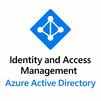
Microsoft 365 Copilot for Leader is designed to empower leaders with AI-enhanced capabilities for smarter decision-making, clearer communication, and improved operational efficiency. The program demonstrates how Copilot analyzes data, summarizes complex information, prepares strategic reports, and supports planning across Microsoft 365 tools. Participants learn to automate routine tasks, elevate team coordination, and drive measurable outcomes using AI insights. This course enables leaders to confidently navigate digital transformation and lead high-performing teams in a rapidly evolving, AI-enabled business environment.
Microsoft 365 Copilot for Leader Training Interview Questions Answers - For Intermediate
1. How does Microsoft 365 Copilot help leaders prioritize daily tasks?
Copilot analyzes email content, calendar events, chat discussions, and deadlines to identify which tasks require immediate attention. It highlights high-impact responsibilities, unresolved items, and upcoming commitments. By presenting a structured priority list, Copilot helps leaders concentrate on the most critical activities instead of sifting through scattered information manually.
2. How does Copilot support leaders in drafting strategic communications?
Copilot uses organizational context and prior communication patterns to generate clear, concise messages tailored for different stakeholder groups. It incorporates relevant data points, action items, and objectives, ensuring consistency and strategic alignment. This helps leaders deliver impactful communication without spending excessive time drafting or editing.
3. How does Copilot aid leaders in identifying team workload imbalances?
Copilot reviews task assignments, project timelines, and team communication patterns to detect uneven distribution of work. It highlights overloaded individuals, pending dependencies, and areas where productivity may be affected. This insight enables leaders to reassign tasks and ensure a healthier workload balance across teams.
4. What value does Copilot add to performance review cycles for leaders?
Copilot compiles relevant documents, activity summaries, and communication trails to provide an overview of each employee’s contributions. It identifies strengths, improvement areas, and trends over time. This reduces the manual effort required during performance evaluations and enables leaders to conduct fairer and data-supported assessments.
5. How does Copilot improve leaders' ability to track organizational goals?
Copilot links daily activities, project updates, and departmental progress to broader organizational objectives. It surfaces gaps between current performance and defined goals and identifies potential risks early. This helps leaders maintain alignment with strategic KPIs and adjust plans and resources proactively.
6. How does Copilot help leaders streamline document creation?
Copilot quickly generates reports, proposals, policy drafts, and executive summaries based on existing data. It ensures the content is structured, professional, and aligned with organizational tone. This allows leaders to produce high-quality documents with significantly reduced manual drafting time.
7. How does Copilot support leaders in strengthening team engagement?
Copilot reviews conversations, sentiment cues, and collaboration patterns to offer insights into team morale and engagement. It identifies communication gaps, missed follow-ups, and unresolved concerns. These insights enable leaders to take corrective actions and maintain a more motivated and connected workforce.
8. How does Copilot simplify data interpretation for leaders?
Copilot translates complex datasets into digestible summaries, visual charts, and narrative explanations. It extracts key metrics, compares historical data, and highlights patterns that are relevant for decision-making. Leaders benefit from faster interpretation of business data without needing advanced analytical skills.
9. How does Copilot enable leaders to manage cross-team dependencies more effectively?
Copilot surfaces tasks and discussions involving multiple teams, highlights dependencies, and warns when delays in one area may impact another. It consolidates updates from various workstreams to give leaders a clear, interconnected view of collaboration activities. This helps avoid bottlenecks and ensures timely coordination.
10. How does Microsoft 365 Copilot support organizational knowledge retention?
Copilot preserves institutional knowledge by connecting information from documents, chats, and workflows into searchable insights. It retrieves historical context for ongoing projects and ensures continuity even when team members change roles. Leaders gain consistent access to important information without relying on individual memory.
11. How does Copilot enhance leaders’ ability to foster innovation?
Copilot provides market insights, internal data trends, and idea suggestions that inspire new initiatives. It assists in preparing concept notes, feasibility analyses, and presentations for innovation proposals. By reducing administrative burden, it frees up leaders to focus on creativity, experimentation, and strategic innovation efforts.
12. How does Copilot help leaders enforce organizational processes?
Copilot monitors workflow adherence by analyzing completed tasks, pending approvals, and compliance gaps. It identifies deviations from standard procedures and suggests corrective measures. This helps leaders maintain operational discipline and ensures teams follow established guidelines across business functions.
13. How does Copilot improve leaders’ visibility into customer or stakeholder feedback?
Copilot consolidates feedback from emails, surveys, chat messages, and meeting notes into thematic summaries. It highlights recurring issues, positive sentiments, and areas needing improvement. Leaders get a clearer understanding of stakeholder expectations, making it easier to refine strategies and improve service quality.
14. How does Copilot assist in reducing leadership fatigue and burnout?
Copilot removes significant cognitive load by automating repetitive tasks, summarizing long communications, and presenting information in an organized form. It reduces the stress associated with managing large volumes of information. This allows leaders to maintain better focus, make clearer decisions, and manage workloads more sustainably.
15. How does Copilot improve leaders’ ability to implement data-driven strategies?
Copilot delivers contextual insights from business data, performance reports, and historical patterns. It provides suggestions rooted in analytical evidence, helping leaders validate assumptions and develop more accurate plans. This ensures strategies are grounded in real metrics rather than intuition alone.
Microsoft 365 Copilot for Leader Training Interview Questions Answers -For Advanced
1. How does Microsoft 365 Copilot help leaders achieve better organizational transparency and accountability?
Copilot improves organizational transparency by aggregating and analyzing information from diverse data sources such as project files, communication threads, performance dashboards, and workflow logs. It provides leaders with visibility into progress, delays, and decision trails, making it easier to understand the cause-and-effect relationships behind operational outcomes. Copilot highlights inconsistencies between reported results and actual activity patterns, ensuring a more accurate reflection of team performance. By surfacing action items, clarifying who is responsible for what, and flagging overlooked tasks, it encourages accountability at all levels of the organization. This enables leaders to address bottlenecks, reinforce ownership, and create a culture where transparency drives continuous improvement.
2. How does Copilot support strategic portfolio management for leaders overseeing multiple initiatives?
Strategic portfolio management requires real-time insight into the status, value, risk, and interdependencies of various initiatives. Copilot consolidates updates from project repositories, budget sheets, Teams channels, and key performance reports to give leaders a comprehensive portfolio overview. It identifies projects that are underperforming, over budget, or misaligned with strategic priorities. Copilot can compare different initiatives using metrics such as ROI, time-to-value, risk exposure, and resource consumption, helping leaders allocate resources more effectively. It also provides predictive insights on future delays or potential conflicts across initiatives, enabling leaders to balance innovation with operational stability.
3. How does Copilot enhance leadership effectiveness in organizations undergoing rapid scaling?
Rapid scaling requires leaders to maintain operational clarity, manage workforce expansion, and sustain organizational culture during growth. Copilot helps by summarizing shifts in workflow patterns, tracking employee onboarding progress, and identifying emerging capability gaps. It provides insight into scalability challenges such as overloaded processes, documentation inconsistencies, or communication breakdowns. Copilot generates process guides, drafts training material, and highlights areas where governance frameworks need strengthening to support future scale. By analyzing communication sentiment and engagement indicators, it also helps leaders preserve cultural cohesion during periods of rapid expansion.
4. How does Copilot strengthen leaders’ ability to manage complex stakeholder ecosystems?
Leaders often manage diverse stakeholders including executives, customers, regulators, partners, and internal teams. Copilot compiles historical communication, meeting summaries, shared documents, and feedback records to build a unified stakeholder map. It helps leaders understand expectations, track previous commitments, and identify emerging concerns or opportunities. Copilot can generate personalized communication for different groups, adjusting tone and detail based on relational context. This reduces the risk of miscommunication and supports consistent, confidence-building engagement. Through sentiment analysis and pattern recognition, Copilot enables leaders to anticipate stakeholder shifts and respond proactively.
5. How does Copilot help leaders improve time-management and reduce strategic drift?
Strategic drift occurs when leaders drift away from long-term priorities due to day-to-day demands. Copilot mitigates this by analyzing calendar patterns, meeting content, task lists, and communication themes to reveal whether leaders are spending time aligned with strategic goals. It surfaces misalignments, such as excessive time spent on low-impact meetings or redundant approvals. Copilot recommends scheduling adjustments, identifies opportunities for delegation, and prepares summaries so leaders can stay focused on high-value decisions. This helps leaders maintain clarity, prevent operational distractions, and maintain consistent strategic direction.
6. How does Copilot contribute to leadership agility in rapidly changing market environments?
Leadership agility requires the ability to process new information quickly, interpret emerging trends, and adapt strategies without delay. Copilot supports this by monitoring external industry insights, internal data patterns, competitor movements, and customer feedback. It synthesizes these signals into coherent summaries that highlight shifting opportunities and threats. Copilot can generate alternative strategies, evaluate predicted outcomes, and outline communication frameworks for rapid deployment. This real-time intelligence empowers leaders to pivot faster, implement adjustments with clarity, and minimize the risks associated with technology, market, or regulatory shifts.
7. How does Copilot enable leaders to improve organizational alignment during mergers and acquisitions?
Mergers and acquisitions create significant information complexity and cultural integration challenges. Copilot unifies data from both organizations—documents, collaboration channels, policies, workflows, and communication archives—to help leaders identify alignment gaps. It extracts redundancies, conflicting processes, or overlapping responsibilities. Copilot also supports integration planning by generating comparative analysis, drafting communication for affected teams, and summarizing integration risks. By highlighting inconsistent terminology, duplicated workstreams, and cultural friction points, Copilot enables smoother integration and improves the accuracy and speed of post-merger alignment.
8. What role does Copilot play in optimizing leadership decision cycles across departments?
Decision cycles often slow down due to fragmented data, miscommunication, and inconsistent reporting. Copilot accelerates these cycles by synthesizing information across Teams, Outlook, SharePoint, and Power BI into structured summaries tailored for leadership decision-making. It tracks pending approvals, unresolved discussions, and cross-team dependencies, ensuring leaders are aware of critical blockers. Copilot generates decision briefs, comparing alternative choices and highlighting implications, risks, and resource impacts. By reducing information-gathering time and clarifying dependencies, Copilot ensures decision cycles become faster, more consistent, and better aligned with strategic objectives.
9. How does Copilot strengthen leaders’ ability to cultivate a high-performance culture?
A high-performance culture depends on clarity, accountability, motivation, and continuous feedback. Copilot identifies behavioral patterns such as low responsiveness, repeated delays, or high collaboration density, helping leaders understand where performance is strong or lacking. It organizes scattered feedback, summarizes achievements, and highlights productivity trends across teams. Copilot can draft recognition messages, generate performance dashboards, and support structured coaching conversations. By offering data-backed insights rather than subjective impressions, it helps leaders address performance issues early and reinforce a culture centered on excellence, fairness, and continuous improvement.
10. How does Copilot assist leaders in managing digital fatigue and information overload in large teams?
Digital fatigue is common in organizations where communication volume, notifications, and meetings are high. Copilot identifies overload patterns by analyzing communication frequencies, after-hours activity, context switching, and meeting density. It helps leaders understand where teams may be struggling with cognitive load or burnout. Copilot suggests meeting optimization, identifies unnecessary threads, and summarizes long conversations to reduce excessive manual reading. It also supports the creation of policies promoting healthier digital habits. Leaders can use these insights to adjust workloads, refine collaboration norms, and build a more sustainable digital workplace.
11. How does Copilot enhance leaders’ ability to drive operational excellence?
Operational excellence requires consistent monitoring, continuous refinement of processes, and quick identification of inefficiencies. Copilot evaluates operational workflows by comparing process documents, system logs, task completion rates, and communication trails. It identifies bottlenecks, redundant steps, or deviations from standard operating procedures. Leaders receive synthesized recommendations for improving consistency, reducing waste, and optimizing resource usage. Copilot also assists in drafting process refinements and governance documentation. This helps ensure that operations stay standardized, predictable, and aligned with organizational goals for quality and efficiency.
12. How does Copilot enhance leaders’ capability to build data-driven leadership dashboards and insights without relying heavily on analysts?
Traditionally, leaders rely on data analysts to compile reports, generate dashboards, and interpret performance metrics. Copilot automates much of this by pulling information directly from organizational systems and translating it into narratives, visual summaries, and cross-functional comparisons. It can construct multi-layer dashboards by combining operational, financial, and HR indicators into a single strategic view. Leaders gain access to real-time insights without waiting for manual report creation. Copilot also identifies trends, anomalies, and potential risks, helping leadership quickly interpret data and take informed action.
13. How does Copilot help leaders enhance governance and policy enforcement across a growing organization?
Governance requires consistency in process adherence, documentation accuracy, and compliance with organizational standards. Copilot analyzes communication trails, process documents, and workflow records to highlight areas where policies are not being followed. It can generate governance reminders, flag missing documentation, and summarize deviations for timely review. Copilot helps leaders refine policies by synthesizing employee feedback, operational constraints, and compliance requirements. Its ability to maintain a continuously updated governance view makes large organizations more disciplined, minimizing compliance risks and operational inconsistencies.
14. How can Copilot support leaders in preparing the organization for future workforce skills and capabilities?
Future readiness requires leaders to understand emerging skill demands, capability gaps, and evolving job roles. Copilot analyzes performance data, project outcomes, and skill usage patterns across teams. It identifies areas where new competencies will be required and suggests targeted training, hiring priorities, or internal mobility opportunities. Copilot summarizes industry trends and aligns them with internal capability maps, helping leaders design long-term workforce development strategies. This builds a more future-ready workforce, prevents skill shortages, and positions the organization for sustained competitive advantage.
15. How does Copilot improve leaders’ ability to conduct risk-based prioritization in complex business environments?
Organizations constantly face competing priorities across operations, strategy, finance, customer engagement, and innovation. Copilot supports leaders by aggregating risk indicators from multiple sources and presenting them in a structured manner. It evaluates risks based on severity, likelihood, resource implications, and impact on strategic goals. Copilot summarizes cross-department risk patterns, highlights interdependencies, and proposes mitigation actions with supporting rationale. Leaders can quickly determine which risks require urgent intervention and which can be monitored. This structured risk-based prioritization leads to better resource allocation and more resilient decision-making.
Course Schedule
| Nov, 2025 | Weekdays | Mon-Fri | Enquire Now |
| Weekend | Sat-Sun | Enquire Now | |
| Dec, 2025 | Weekdays | Mon-Fri | Enquire Now |
| Weekend | Sat-Sun | Enquire Now |
Related Courses
Related Articles
Related Interview
- Smart Plant Electrical Admin (SPEL) Interview Questions Answers
- Certinia PSA Training Interview Questions Answers
- Workday Payroll Training Interview Questions Answers
- Certified Ethical Hacker (CEH) Training Interview Questions Answers
- Microsoft 365 Copilot for Business User Training Interview Questions Answers
Related FAQ's
- Instructor-led Live Online Interactive Training
- Project Based Customized Learning
- Fast Track Training Program
- Self-paced learning
- In one-on-one training, you have the flexibility to choose the days, timings, and duration according to your preferences.
- We create a personalized training calendar based on your chosen schedule.
- Complete Live Online Interactive Training of the Course
- After Training Recorded Videos
- Session-wise Learning Material and notes for lifetime
- Practical & Assignments exercises
- Global Course Completion Certificate
- 24x7 after Training Support









 Join our Live Instructor-Led online classes delivered by industry experts
Join our Live Instructor-Led online classes delivered by industry experts